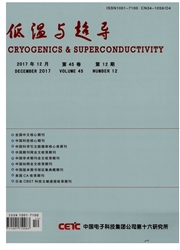

 中文摘要:
中文摘要:
摘要:针对跨临界CO2带膨胀机和带喷射器逆循环的差异,从循环工作原理、CO2超临界流体降压过程及循环性能三方面进行对比分析。利用蒸发波理论分析了CO2超临界流体降压过程,结果表明这两个降压过程均是由亚稳态经历蒸发波后发生气液两相流的,其过程均受蒸发波影响。当其他条件相同,气体冷却器出口温度为35℃时,带膨胀机仇为0.7循环的EER最大值比带喷射器肛为0.7循环的EER最大值高24%,而在蒸发温度为5℃时,前者的EER最大值比后者的EER最大值高33%。在比较工况下,跨临界CO2带膨胀机循环在膨胀机绝热效率为30%-70%时的效率普遍高于带喷射器循环在喷射系数为0.3~0.7时的效率。
 英文摘要:
英文摘要:
In this article, a comparative study was performed for the transcritical C02 refrigeration cycles with expander and ejector in three aspects of the working principle of the cycle, the depressurization of supercritical CO2 and performances of the cycle. In the view of the working principle of the cycle, the cycle with expander had great advantage over the cycle with ejector in some aspects of the recovery of throttle loss and the irreversible loss. On the basis of the theory of evaporation waves, the depressurization of supercritieal CO2 was analyzed. The results show that the depressurizations of two cycles both underwent evaporation wave, then produced gas - liquid two - phase flow , and these processes were significantly affected by evaporation waves. When the gas cooler outlet temperature was 35℃ under otherwise identical conditions, the EER of the cycle with the expander efficiencies at O. 7 was better than that of the cycle with the entrainment ratio at 0.7 by above 24%. Whereas, the evaporation temperature was 5℃ under otherwise identical conditions, the former was up to 33% better than the latter. Under the comparative working conditions in this study, cycles with the expander efficiencies at 0.3 - 0.7 overperformed generally cycles with the entrainment ratio at 0.3 - 0.7.
 同期刊论文项目
同期刊论文项目
 同项目期刊论文
同项目期刊论文
 Experiment and Chemical Kinetics Analysis of Active Atmosphere with Different Fuels in HCCI combusti
Experiment and Chemical Kinetics Analysis of Active Atmosphere with Different Fuels in HCCI combusti 期刊信息
期刊信息
